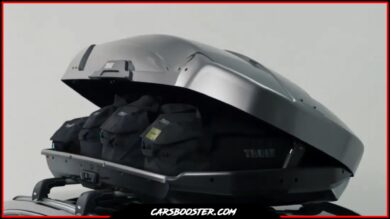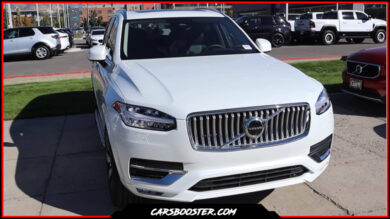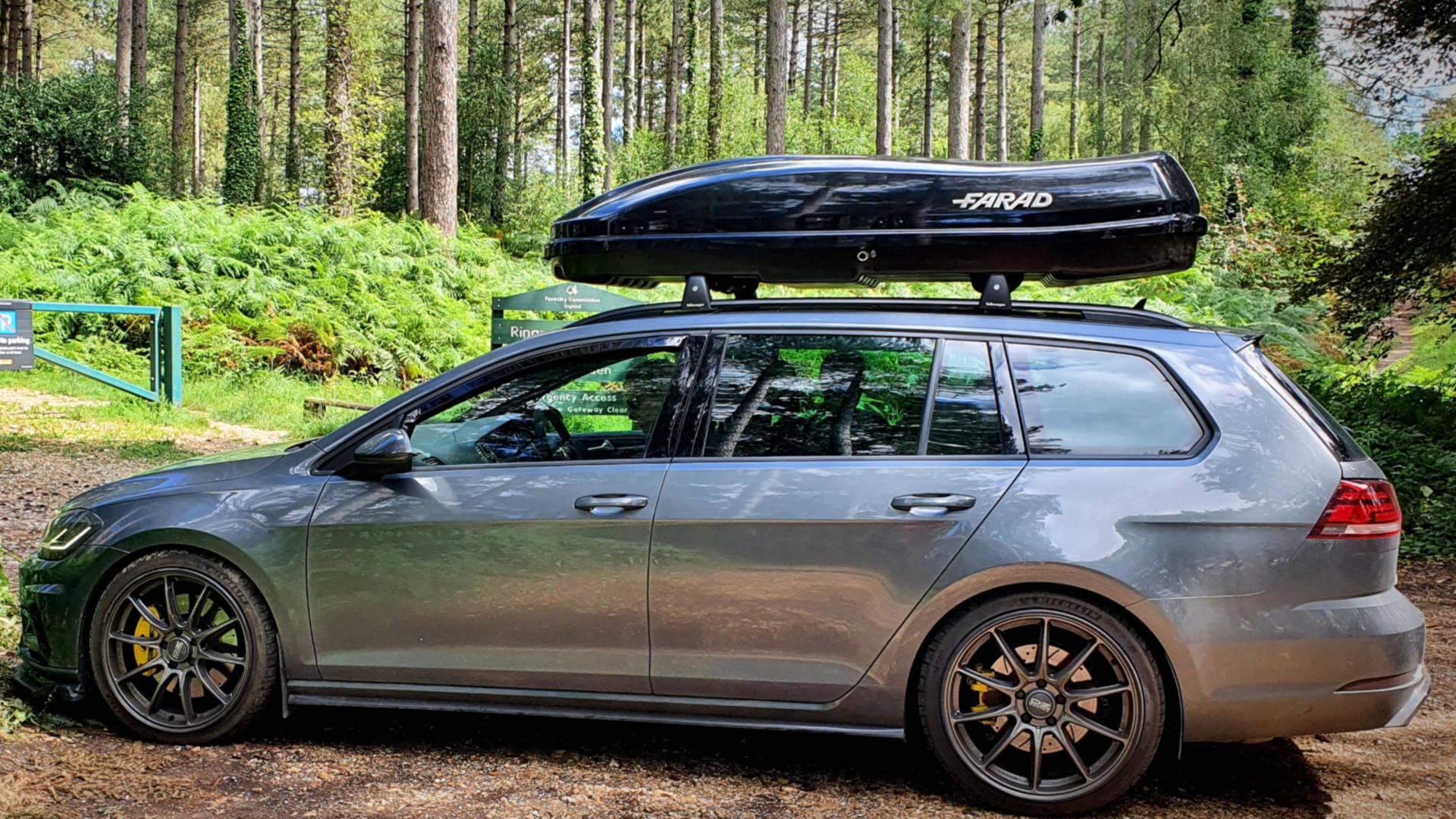
When it comes to traveling with a roof box, it’s essential to take the necessary precautions to protect your roof box and ensure that your gear stays safe and secure during transit. After all, your roof box is not only a valuable investment but also a vital component of your trip’s success.
In this article, we’ll discuss 12 helpful tips on how to protect your roof box to ensure that it lasts for many trips to come.
In short, by tuning in and following the tips and tricks we represented in this article, you will prevent any damage to your roof box, your gear, and your vehicle.
12 Tips For Protecting Your Roof Box
Combining our personal experience with extended research we came up with the most important tips for protecting your roof box, here they are down below:
Choose the Correct Roof Box for Your Adventure
The first step in protecting your roof box is to pick the right one for your adventure. When selecting a roof box, consider the size and weight of your gear.
A roof box that’s too small or heavy for your car won’t do. So make a list of all the gear you’ll be bringing and measure the largest items. That’ll give you an idea of the size of the roof box you’ll need.
Next, determine the amount of space you require. How many people are joining you and how long will the trip last? Camping trips require more space for sleeping bags, tents, and other equipment. Weekend trips might only need space for a few bags and snacks.
When it comes to materials, opt for durability. A flimsy roof box won’t last long and could cost you more in the end. Fiberglass or high-quality plastic roof boxes are not only durable but also lightweight, easing the load on your car.
Aerodynamics is another crucial factor. An un-aerodynamic roof box can increase fuel consumption and affect your car’s handling. Look for a roof box that’s designed to reduce wind resistance and improve aerodynamics, saving you money and making the trip smoother and safer.
Pack and Secure Your Gear Properly
Once you’ve selected the right roof box, it’s time to pack and secure your gear correctly. This ensures your gear stays safe and secure during transport.
First, pack your gear in a way that maximizes space and minimizes movement. Items shifting during transport can damage your gear and roof box. Use packing cubes or bags to keep smaller items organized and prevent them from moving around.
Second, secure your gear appropriately inside the roof box. Use straps or bungee cords to keep items in place and prevent them from moving during transport. This also reduces wind resistance and improves your car’s aerodynamics.
Use the Proper Hardware to Mount and Hold the Carrier to Your Car
Mounting and holding your roof box to your car requires the appropriate hardware. This ensures your roof box remains securely attached to your car during transport.
First, make sure you have the correct mounting hardware for your roof box. Different roof boxes require different hardware, so check you have the right one.
Second, follow the manufacturer’s instructions for mounting your roof box. This ensures it’s securely attached to your car and won’t come loose during transport.
Place the Roof Box in the Correct Position
Once your roof box is mounted to your car, place it correctly. This improves your car’s aerodynamics and ensures your roof box doesn’t interfere with your trip.
First, center your roof box on your car’s roof to distribute the weight evenly and reduce strain on your car’s suspension.
Second, place your roof box as far forward as possible without obstructing your view of the road. This improves your car’s aerodynamics and reduces wind resistance.
Try Not To Access the Cargo Carrier Regularly on the Road
When loading up your rooftop carrier, keep in mind that you’ll be on the road for a while before you stop, so don’t put anything in there that you’ll need on the way.
For example, if you stash snacks in the carrier, it’s not practical because you’ll have to keep stopping to grab them.
So, you need to be strategic about your packing and trip planning from the get-go. Think ahead about which items you might need to access along the way, and make sure they’re in the car, not the carrier. Only load up the stuff you won’t need for a while in the cartop carrier, like the outfit you’re planning to wear tomorrow.
It’s Always Good To Have A Set Of Tools And Supplies With You
When you get yourself a cartop carrier, it usually includes all the necessary gear to make sure it’s tied down properly – straps, car hooks, and whatnot.
These items do a great job at keeping the carrier secure, but you should also be ready to make pit stops every now and then to tighten them up and ensure your carrier stays put throughout your ride.
This means bringing along extra straps, just in case they’re needed. And you might also want to pack some simple tools in case any part of the carrier or roof rack becomes too loose and needs tightening.
In most cases, you won’t need any tools at all, or you can make do with what comes with the carrier. However, it’s a good idea to check everything before you hit the road to ensure you have all the necessary gear.
Know Your Car’s Weight Limit
Another important factor to consider is your car’s weight limit. Make sure that your roof box, along with all your gear, is within your car’s roof weight limit.
Overloading your car can cause damage to your roof, and other components, which can be costly to repair.
Be Aware of Thieves
Roof boxes can be an easy target for thieves, especially if they contain valuable items. To protect your roof box, make sure that you lock it properly and avoid leaving it unattended for extended periods of time. You can also use a cable lock to secure your roof box to your car’s roof rack.
Store the Roof Box Properly
Proper storage is key to keeping it in tip-top condition for your next adventure. So, make sure to stash it away in a dry and cool place, away from extreme temperatures and scorching sunlight for prolonged periods. By doing so, you’ll help prolong its lifespan and guarantee that it’s always adventure-ready.
Don’t Drive Too Fast
Don’t be reckless when driving with a roof box, particularly when it’s windy outside. Stick to the posted speed limits and tweak your velocity depending on the road’s conditions. Remember, driving too fast can be a recipe for disaster, so exercise caution and stay safe out there!
Be Aware of Height Restrictions
In addition to low-clearance areas, it’s also important to be aware of height restrictions on roads and bridges. Make sure that your car, along with your roof box, is within the height limit to avoid damaging your car or creating a hazard on the road.
Maintain Your Cargo Carrier and Protect It Against the Elements
Regular maintenance is key to extending the life of your roof box. Make sure to clean it regularly and avoid using abrasive materials that can scratch or damage the surface. You can also use a protective coating to help protect your roof box from UV rays and other environmental factors.
Conclusion: How to Protect Your Roof Box Probably?
In conclusion, a roof box can be an invaluable tool when traveling, providing ample space for your gear while keeping it safe and secure during transport.
By following the 12 tips outlined in this article, you can rest assured that your roof box will last for many trips to come.
Remember to always prioritize safety and proper installation, and enjoy your adventure with the peace of mind of knowing that your gear is securely stowed away in your roof box.
With that being said, we hope you found our answer to the question How to Protect Your Roof Box Probably? valuable and pleasant, and if so, please assist us by sharing it, since sharing drives us to create more relevant content.



